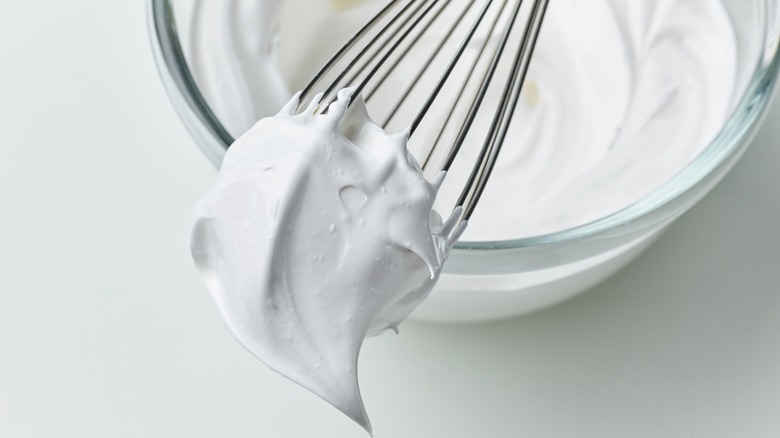The Unexpected Object Once Used To Make Whipped Cream
Do you love whipped cream? Most people do. It's light, fluffy, and not too sweet. Plus, it goes well with so many desserts. Whether you're topping off a slice of pie or enjoying a bowl of berries, whipped cream is almost always the perfect finishing touch.
But have you ever thought about how whipped cream is made? If you're like most people, you probably haven't given it much thought. After all, it's just cream that's whipped into a spreadable consistency, right? It turns out that there was a time when the process of making whipped cream took a lot more doing than it does today.
Whipped cream is thought to have originated in France sometime around the 16th century, followed by Italy in the 17th century (via The Nibble). At that time, cream was typically churned by hand using a wooden paddle. This process was both time-consuming and labor-intensive, so cooks began looking for shortcuts.
Whippin' Willows
Up until the early 1800s, whipping cream was a labor-intensive process that involved using a tree branch to beat the cream into submission, Food & Wine reports. This method, which usually involved the use of a willow or rush branch, was actually quite effective in creating a light and airy texture. The foam that developed on the surface of the whipped cream would be skimmed off, drained, and stored.
Per The Nibble, the biggest problem with this method was that it was also very time-consuming — typically taking over an hour to produce enough whipped cream to make it worthwhile. Thankfully, modern technology has made it possible to whip cream without having to resort to using a tree branch. Nowadays, whisks and electric mixers can do all the work in just minutes.
So, the next time you enjoy a dollop of whipped cream on your dessert or hot chocolate, take a moment to appreciate how far we've come within the world of homemade whipped cream recipes.

